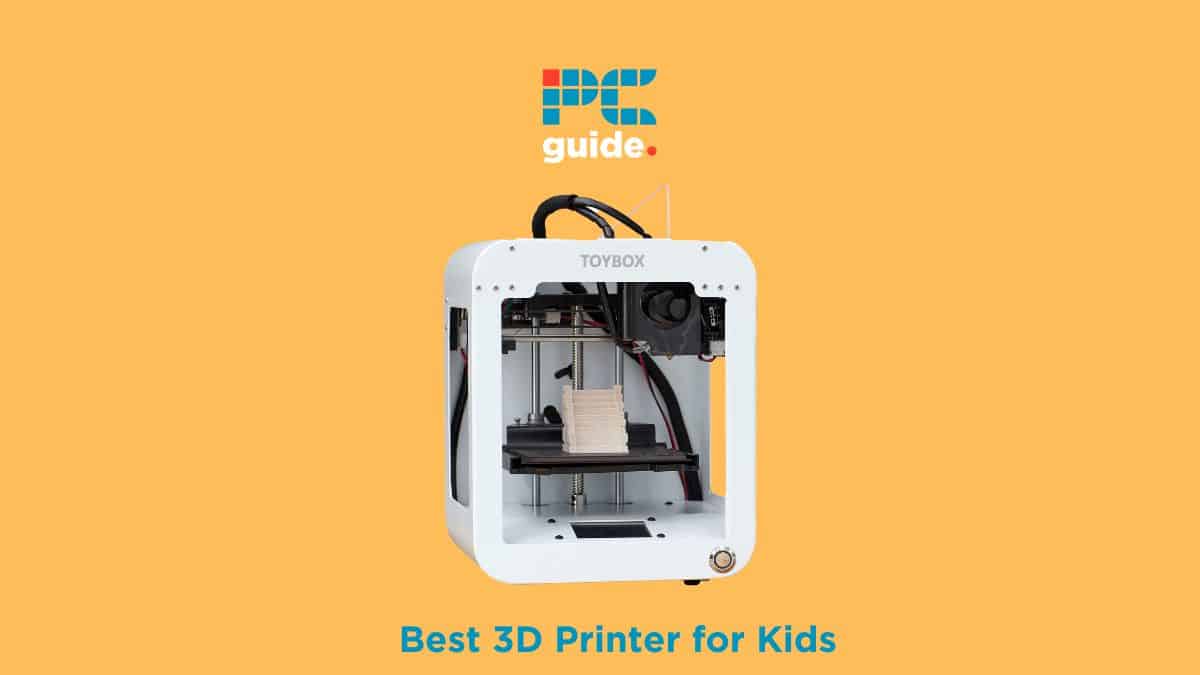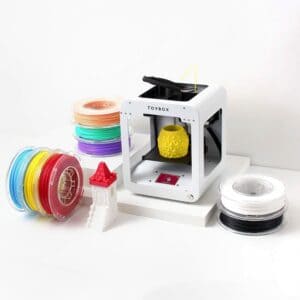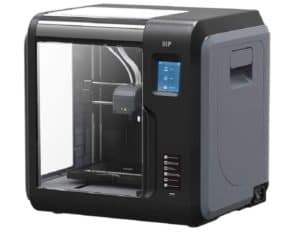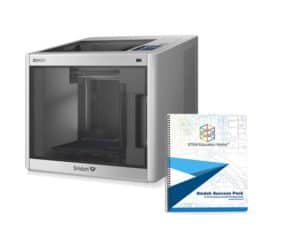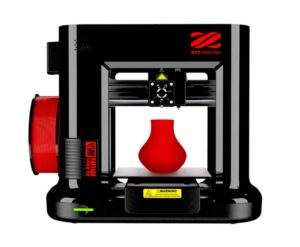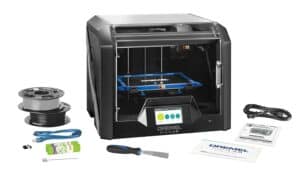Products at a Glance
How We Picked the Best 3D Printers for Kids
We took a long, hard look at the best 3D printers for kids on the market, but with some key specifications. We tried to focus on relatively simple beginner 3D printers which wouldn’t be too hard for kids to get to grips with. Similarly, there are budgetary considerations: “easy” doesn’t always mean “cheap”, so we’ve accounted for 3D printers across a range of budgets. Of course, with these in mind, overall performance was the other main factor. We looked for units that printed reliably and to a high standard, with quality-of-life features such as automated leveling or filament run-out detection as an added bonus.
For more information on the key factors that decide the best 3D printers, check out our section on Features and Considerations after our rankings.
Product Reviews
- Easy to use
- Food safe printing
- Compatible with a range of devices
- Limited filament
- Relies on an internet connection
With a simple interface and a compact design, the Toybox 3D Printer is our top choice for child-friendly creativity. It features a one-touch control which goes a long way in ensuring that children as young as five do not get bored while using it. After a quick assembly, you’ll be printing in no time with no adjustments needed, and can adjust easily from a compatible smartphone or tablet. Choose from an array of pre-designed models on the Toybox site, or create your own edible designs. That’s right: with the big draw of this kids’ 3D printer is the ability to feed your designs in order to feed yourself, with Toybox including spools of flavored food filament with this 3D printer!
That is the only filament you can use, however, as the Toybox’s equal parts feature and flaw is the exclusive limitation to edible filament – anything else can risk damaging the printer and making future edible products toxic. Though this is a limiting factor, it allows children to safely use a 3D printer, with minimal hazards. We still highly recommend the Toybox as a safe and fun way to introduce 3D printing to children!
- Mainstream 3D printer features
- Limited spool size
For a more involved 3D printing experience, the Monoprice Voxel strikes a balance between full-fledged industrial 3D printers and the beginner-level designs – less of a toy, more of a tool.
Featuring a closed-frame design and automatic leveling, the Voxel displays a level of technical competency that some mid-range 3D printers fail to attain. Whilst other 3D printers can make swapping over different nozzles a cumbersome task, this printer is unique in allowing for quick nozzle replacement in moments. The flexible printing bed also makes for easy removal of models upon completion, and you can send designs to the printer remotely thanks to its cloud-based connectivity.
There is a major limiting factor to this 3D printer, however. The amount of filament you can feed through the Voxel is small, making for tedious and constant replacements of your chosen filament. But for small and infrequent use, the Voxel is hard to beat as one of the best 3D printers for kids and teenagers – combining the complexities of 3D printing with a simplistic design.
- Easy-to-use design
- Intuitive interface
- High price point
3D printing is not without its risks, but the Sindoh 3dwox manages to minimize them. Featuring an intelligent design and a gamut of great features, this is a premium 3D print experience for older children all the way up to adults!
Nearly every potential hazard or hassle of a 3D printer has been mitigated by the 3dwox’s design: the printing sound is minimal, the filament is automatically loaded and unloaded, and it features an air purification system to reduce toxic fumes. For safe 3D printing with your child or teenager, this is the best bet. Along with classically helpful features such as automatic bed leveling and a flexible build plate, Sindoh also employs Open Source filament: meaning that your filament choices extend beyond classics such as PLA or ABS.
That said, you do pay a premium on the 3dwox: if you are unsure of your child’s interest in 3D printing, this may not be the right choice. But that prices guarantees an unrivaled ease of use and versatility that is hard to come by in starter 3D printers. We highly recommend the Sindoh 3dwox as a top-tier printer for a safe and satisfying 3D print experience!
- Small form factor
- Affordable
- WiFi connectivity
- Expensive XYZ filament exclusivity
For ease of use at a more affordable price point, consider the XYZ da Vinci Mini. Ready to print out of the box, this mini 3D printer is light on everything from weight to wallet.
The da Vinci Mini is marketed as a family-friendly printer, with easy-to-use software and hardware to maximize accessibility. A community page lists thousands of designs for you to choose from if you lack inspiration, and the quality of the models is always standout.
There is a catch, however. The da Vinci Mini is limited to XYZ Printing’s exclusive filament design, which is prohibitively expensive and runs out quickly. This hamstrings an otherwise great budget 3D printer for kids and makes the upfront affordability less meaningful in the long run. If you can swallow the additional filament cost, then the da Vinci Mini is still a great easy-to-use 3D printer!
- Highly versatile
- Automated features
- Small build volume
The Dremel DigiLab 3D45 frequently tops our lists of top 3D printers. Though it’s not ideal for children, it is a versatile and easy to use printer that can be used for anything.
The 3D45 has compatibility with a range of filaments from PLA to Nylon, making for a versatile print experience. With automated leveling and an internal camera, children can watch their design come to life before their very eyes without interference. The 3D printer is intuitively designed to automatically adjust its settings when it detects the installed filament: for a smart 3D printing experience, this is your best choice.
That said, if you want to build larger models, this is one to avoid: despite its bulky size, the build volume on this model is actually quite low. We assume it is due to the unit being packed with so many other great features, however, as the DigiLab 3D45 is still a top-notch 3D printer for any age bracket!
Features and Considerations
Now you’ve taken a look at some of the best 3D printers available for children and young people, you might want to start narrowing down your search. Take a look at some of most important factors to consider when picking one out:
Size
Think about the space you have free for the 3D printer. Some models can be quite large so you may struggle to fit them neatly in the corner of a room. Measure your available space and compare it against the dimensions of the printer. There are some terrific small 3D printers on the market, so you should never be unable to house a 3D printer.
Accessibility
3D printers utilize software known as a slicer: this acts as a median between the 3D model on your device and the 3D printer’s native software, translating the data. This is so you can easily print without any jarring errors between render and model. Similarly, the most user-friendly printers will help you if you encounter any errors and can improve your overall print quality. Features like a touchscreen, flexible bed, or automated leveling can all make 3D printing more accessible.
Precision and quality
Some 3D printers create more accurate prints than others. If you want to get value for money, do some research into the device and how precise its printing results are. If you want the smoothest and highest-quality prints, you may have to stretch your budget somewhat but if your child just wants to make simple shapes and have fun, then the accuracy may not be so important. In both cases, you want something with a relatively straightforward learning curve.
Safety
A paramount concern regardless of your age, 3D printers are noisy, run hot and can emit fumes – all of which can be problematic for parents. Enclosed 3D printers mitigate these factors as best as they can, but regardless you should make sure that the 3D printer doesn’t stay in the same room as your children, especially when running. Similarly, make sure they are aware of the hazards of the model you choose, in order to best protect against injury.
What can my child make with a 3D printer?
Depending on the printer, the possibilities are endless! Some fun examples of toys to make include:
- Spinning tops
- Puzzles
- Dice
- Figurines and dolls
- Animals
- Children’s tools and toolboxes
- Skeleton
- Miniatures
While many objects can be made for simple enjoyment, 3D prints can also be educational so making skeletons or building blocks can help your child learn about biology and engineering. Let your child’s imagination run wild and the adventure begin.
Are 3D printers safe for kids?
Yes: Safety is paramount when a child is using a 3D printer. Thankfully, 3D printers are built with this practicality in mind: the ideal models should have an enclosed design to prevent a child from accidentally making contact with the heated components or fumes inside. That said, be sure to take care when using a 3D printer to avoid injury.
Are 3D printers good for 12-year-olds?
With the right supervision and a child-friendly product, 3D printers are a great and perfectly safe resource for children to get creative with. 12 years old is the recommended age for most budding 3D printers to get started! 3D printing will very likely be an incredibly important industry in the future – so introducing your children to the world of 3D printing early on is a great idea.
Our Verdict
The Toybox may not be the most versatile 3D printer for kids, but it offers a truly unique way for them to get involved with 3D printing. Compact, easy to use and edible, this model is the best kids 3D printer on the market!
If you’re wanting to encourage baking as well as eating, consider using a 3D printer to create food-safe molds. Check out our guide on the best 3D printers for cookie cutters to blend the best parts of cooking and printing!

